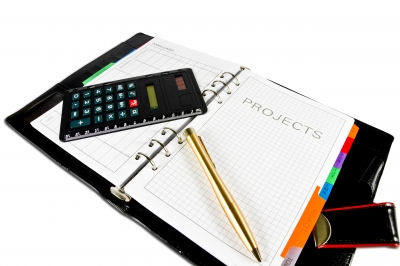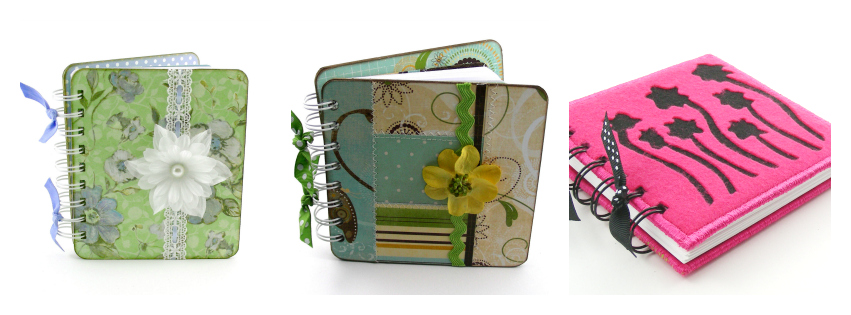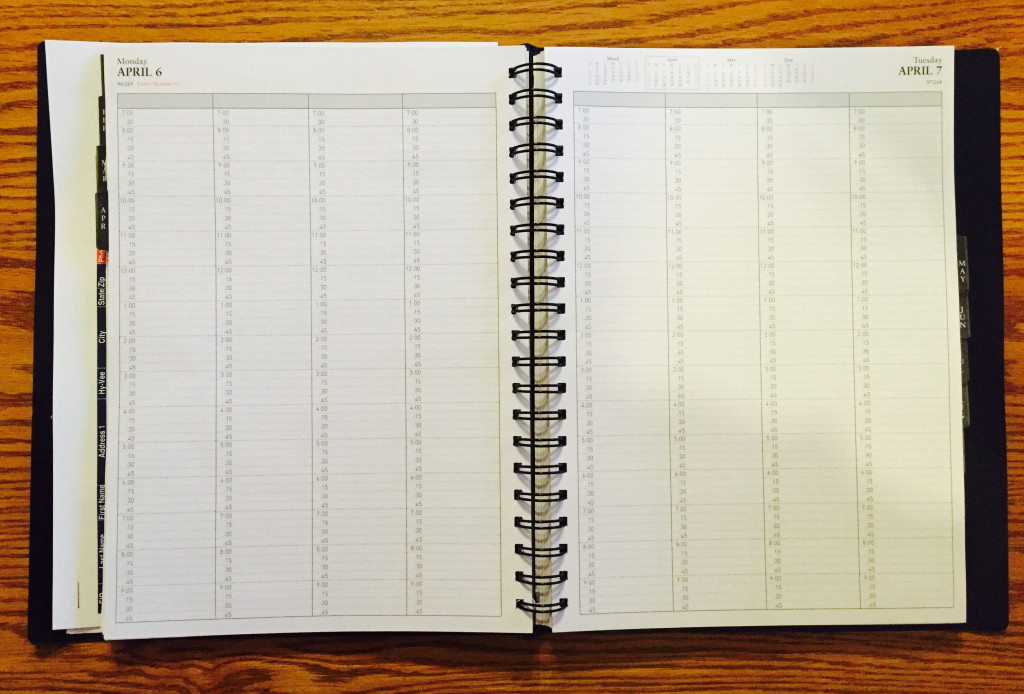I have to admit I love the look of planners, all planners, but every time I attempt to use a so-called classic planner that is divided up into monthly, weekly and daily sections, I end up with more blank pages than not. Perhaps the one exception occurred years ago, when I taught after-school enrichment classes at six different elementary schools. At that time I had a need to more closely track my doings in a more traditional way. These days, however, my activities are more project-based; they simply take the time they need to take. Deadlines are loose and self-imposed, so a planner that provides line-by-line spaces for each hour of the day brings a smile to my face, but doesn’t particularly appeal to me. Still, I love the idea of such a traditional planner. Whether it’s useful or not depends on your life circumstances.
Last week I read an inspirational post, Joining the world of Filofax, by freelancer Rose Clearfield of Randomcreative Art in which she describes the flexible planner system she has decided to adopt. Rose goes into even more detail in this second related post, How I Set Up My Filofax Personal Finsbury: My Ring Binder Organization and Tips. What seems to make her Filofax work especially well is the fact that she can personalize it any way she wishes. She has created two types of calendar sections (monthly and weekly), as well as sections for contacts, household tasks, and personal pages. The Filofax, a six-ring pocket-sized organizer, enables you to easily add or remove pages, as well as rearrange them. It’s helpful, of course, if you purchase a six-hole adjustable punch, as Rose did, to take advantage of that flexibility. Rose points out that while you can decorate your pages, her philosophy is to “Concentrate on organization first and decorating second.”

When my husband worked in pharmaceutical sales, he used a monthly planner, but these days he supervises about 80 people across six states and finds a daily planner more appropriate for his needs. “I simply found that the monthly style didn’t have enough space for all of the events and people I have to track,” he told me. John’s statement underscores how your needs can change over time.
I mentioned in a previous post that I recently received an e-mail from Etsy, indicating it had just revamped its product categories and subsequently re-assigned sellers’ items to new categories. To my surprise, I discovered that my address books were identified as planners. This made me think about what else a planner might be. For example, would my “Save the Date” (important dates reminder) books be classified as planners? What about the “Sewing Machine Stitch Diaries” I sell?
 According to Andrea of the Scattered Squirrel Web site, a planner doesn’t have to be a paper-and-pen organizer. “A planner,” says Andrea, “is simply a tool or system used to help you keep track of important dates and appointments, build or maintain routines, and make the best use of your time and energy.” As such, it can be the address book you keep on your smart phone, mind maps you sketch in a blank book, a shopping list, sticky notes you paste to a bulletin board, a mood board (either physical or digital)—basically any systematic approach to collecting ideas or information that you use. To answer my own question from the previous paragraph, all three of the books I described—address book, Save the Date book, and Sewing Machine Stitch Diary—are planners.
According to Andrea of the Scattered Squirrel Web site, a planner doesn’t have to be a paper-and-pen organizer. “A planner,” says Andrea, “is simply a tool or system used to help you keep track of important dates and appointments, build or maintain routines, and make the best use of your time and energy.” As such, it can be the address book you keep on your smart phone, mind maps you sketch in a blank book, a shopping list, sticky notes you paste to a bulletin board, a mood board (either physical or digital)—basically any systematic approach to collecting ideas or information that you use. To answer my own question from the previous paragraph, all three of the books I described—address book, Save the Date book, and Sewing Machine Stitch Diary—are planners.
In her series about Creating the Planner That Works for You!, Andrea stresses that you can’t really know what kind of a planner will work for you until you identify what hasn’t worked for you in the past, as well as what has worked well. She points out that while you can purchase a planner with pre-existing sections, there are many free or economically priced planner printables on the Web that you can download to create a personal planner that is perfect for you. There are printables for busy moms who organize family appointments, grocery shopping excursions, children’s chores and household tasks. For bloggers, there are printables that help you track social media and blog statistics, keep track of sponsored ads, keep all of your blog post-and-series ideas in one place, identify your goals, provide an editorial calendar, and follow up with contacts. In short, there are printables for every need you can conceive, and what you can’t find you can probably create yourself using your favorite word processing software.
This post is not intended to provide a comprehensive list of printable resources, but below are a few links that provide a starting point for planner printables:
- Scattered Squirrel Printables
- The Ultimate Blog Planning Notebook
- 100+ Places You Can Find Free Planner Printables for 2015
- Free Printable Planners
In my next post, I’ll discuss what kind of a personal planner I believe will work best for me, and how I arrived at my conclusions. Let me know in the comments below what planner system(s) you use, and why they work for you.
© 2014 Judy Nolan. All rights reserved.


The general message I take away from your post (and Rose’s post) is that paper planners are alive and well! If Etsy designated a new “planner” category, you can’t be the only person whose items they moved there. I really can’t use my phone or iPad as a planner – something digital just doesn’t work for me. I can’t remember to use it or look at it later! Give me something I can write on. =)
I received my first Filofax as a gift when I successfully completed my “Abitur”. I still have it
I just find the calendars you’re required to purchase every year too expensive, so I rarely use it these days…
Last year I bought a leather refillable planner. It had monthly sections and 2 pages for each week. I found the same thing you did…that half the pages were empty. I don’t schedule things like that anymore, so that style of planner wasn’t really what I needed.
This year when I refilled it (just last week…lol) I bought monthly tabs, but just bought blank pages I can put where ever I want. This allows me to take notes, but not have 50 pages left at the end of the year.
I do agree with Andrea that you won’t know what will work until you’ve figured out what won’t.
Last year I received as a gift a very expensive planner. It came late (like March) so maybe if it had been received earlier it may have been a little different story. The front had a lot of space to do some looking back at previous years and then looking forward to the current year. That part was good although I didn’t use it – lol. But as for the planner itself it didn’t suit my retired lifestyle. I don’t need an hour by hour list and I found that when I did use it things changed daily (sometimes even hourly) so I wasn’t able to follow my written schedule. I’m still searching for a “planner” that works for me. My main challenge though is to just put something together and use it. I really need to spend some quality quiet time thinking about what would work and then putting it together. Looking forward to your next post on this subject!
I definitely need a place where I can jot things down. I loved a spiral-bound planner that showed a week at a glance and had a column on the right margin for a TO DO list. Very useful! I don’t need something that big anymore, so I usually just carry a pocket calendar which has some extra NOTES pages these days.
My young boss laughed when I pulled it out one day. (He’s gone 100% digital.) He said his mom still uses a planner, too.